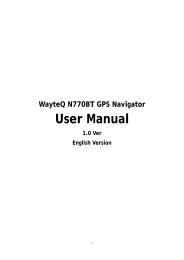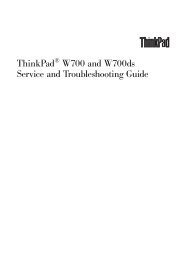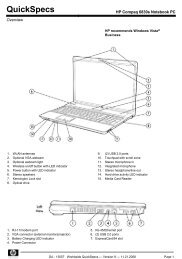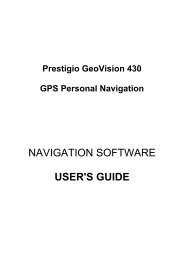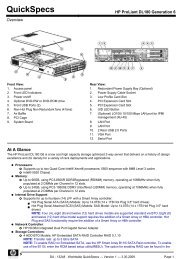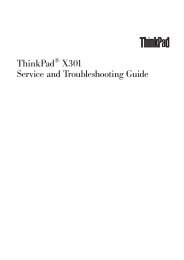You also want an ePaper? Increase the reach of your titles
YUMPU automatically turns print PDFs into web optimized ePapers that Google loves.
Connections<br />
Using the Notebook PC 4<br />
The built-in modem and network cannot be installed later as an upgrade. After purchase,<br />
modem and/or network can be installed as an expansion card.<br />
Modem Connection (on selected models)<br />
The telephone wire used to connect the Notebook PC’s internal modem should have<br />
either two or four wires (only two wires (telephone line #1) is used by the modem) and<br />
should have an RJ-11 connector on both ends. Connect one end to the modem port and<br />
the other end to an analog telephone wall socket (the ones found in residential buildings).<br />
Once the driver is setup, the modem is ready to use.<br />
When you are connected to an online service, do not place the Notebook PC in suspend<br />
(or sleep mode) or else you will disconnect the modem connection.<br />
Example of the Notebook PC connected to a telephone jack for use with the built-in modem:<br />
Telephone connector<br />
is the smaller of the two<br />
Telephone<br />
connection is<br />
optional<br />
Telephone cables<br />
with RJ-11 connectors<br />
Telephone Wall<br />
Jack<br />
WARNING! Only use analog telephone outlets. The built-in modem does not support<br />
the voltage used in digital phone systems. Do not connect the RJ-11 to digital phone<br />
systems found in many commercial buildings or else damage will occur!<br />
CAUTION: For electrical safety concerns, only use telephone cables rated 2 AWG or<br />
higher. (see Glossary for more information)<br />
4



